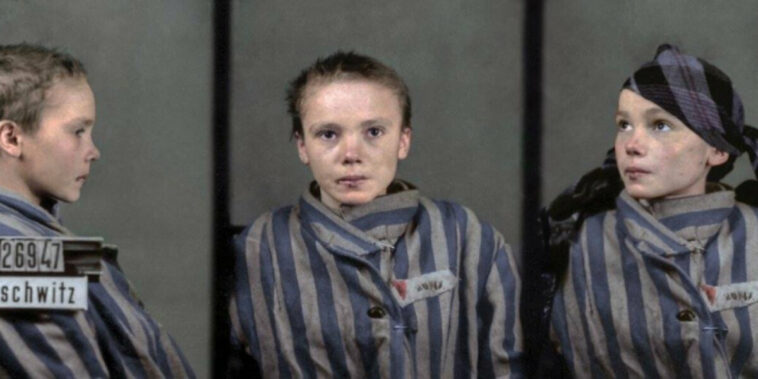An abyssed gaze, lost in the phantasmagoric intuition of her own death, expecting nothing, barely feeling the occult bond of an existence in a trance of perplexity.
Czeslawa Kwoka’s abyssed gaze: a Polish girl
Czeslawa was a Polish girl, still beardless in spirit, was arrested on December 13, 1942, when the Nazis invaded the county of Zamosc, in Poland, evicting like lightning more than 300 villages and deporting more than 100,000 people to the concentration camps of Auschwitz and Majdanek.
The military operation against defenseless civilians was only the beginning of an ambitious plan, the so-called “General Plan Ost” or General Plan East, which consisted of the deportation and gradual industrial extermination of 50 million Slavs.
But what was behind this perverse operation had nothing to do with simple Slavophobia, since the real aim was to create in the medium term a “Lebensraum” or German living space, where they intended to install colonies of Aryan farmers and agriculturists, that is to say, with a colonial and imperialist intentionality concealed under racial assumptions.
In one of the transports in which the Polish deportees from Zamosc County traveled, they included Czeslawa and her mother, Katarzyna, starving, uprooted and physically and emotionally tortured, passing through the Polish plains until they reached the Auschwitz-Birkenau camp.
There, in the always dark ramp of Auschwitz, they passed the first selection process, where the SS examined the prisoners and discriminated between those who would die that same day in the gas chambers and those who would have the possibility of surviving days, weeks or perhaps months, in the service of the Nazi slave labor structure and war machine.
Czeslawa stares into the lens, her expression grim and inscrutable, just minutes before she was marked with the number 26,947, which will replace her own name as long as she remains in that place of death.
Her mother has been tattooed with the immediately preceding number. After tattooing her as a sign of bestialization, of strategic dehumanization, she was given a striped suit of a much larger size than hers, so much so that she had to fasten it with a safety pin.
After all this initial paraphernalia, the SS placed her in front of Wilhem Brasse’s camera, who was just another prisoner who was allowed to momentarily avoid the gas chamber in exchange for offering to leave a photographic record of the new prisoners who were arriving, because we must bear in mind that the Germans were obsessed with leaving a graphic record of all their crimes.
On March 12, 1943, Czeslawa was injected in his chest with a white crystalline solid called phenol, which caused his death.
If we look closely at his photograph again, it is as if something numinic were reflected in it, something primitive capable of establishing a separation between the ordinary, or of this world, and the mysterious, or of the beyond.
- Facebook Messenger

